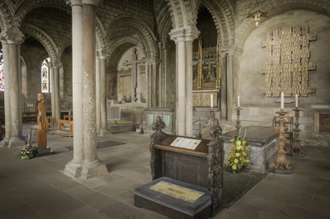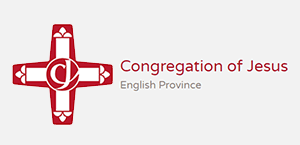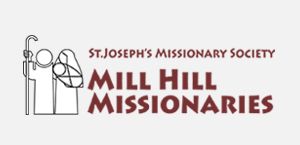Gospel in Art: Feast of Saint Bede the Venerable

Saint Bede's Tomb, Galilee Chapel at Durham Cathedral © Durham Cathedral
Source: Christian Art
Gospel of 25 May 2024
Mark 10:13-16
People were bringing little children to Jesus, for him to touch them. The disciples turned them away, but when Jesus saw this he was indignant and said to them, 'Let the little children come to me; do not stop them; for it is to such as these that the kingdom of God belongs. I tell you solemnly, anyone who does not welcome the kingdom of God like a little child will never enter it.' Then he put his arms round them, laid his hands on them and gave them his blessing.
Reflection on the shrine
Saint Bede, also known as the Venerable Bede, was an English monk (died 26 May 735), renowned for his contributions to theology, history, and literature, and particularly for his influential work Ecclesiastical History of the English Church and People, which remains an invaluable source for understanding early English history and Christianity.
The history of Bede's shrine dates back to the medieval period when Durham Cathedral was a centre of pilgrimage and religious devotion. Pilgrims from across England would visit the cathedral to pay homage to Saint Bede and seek his intercession for spiritual guidance and healing. Saint Bede's shrine in the Cathedral was destroyed in 1540, as part of the Protestant Reformation that was sweeping through England. Bede was re-buried beneath the original site. A simple chest tomb was built above him, made from Egglestone marble. It was dismantled in 1831 when the grave was opened. As befitted a simple monk, no costly silks or rich jewels were found: only a plain gilt iron ring and a few small coins, which had probably been pushed through the stonework of the grave as offerings. When the chest tomb was rebuilt afterwards, the top was engraved with the text traditionally used on his grave: Hac sunt in fossa Bedae Venerabilis ossa which means 'In this grave are the bones of the Venerable Bede'. Today the tomb of the Venerable Bede can be seen in the Galilee Chapel of Durham Cathedral.
Bede's last moments have been recounted. A few hours before he died Saint Bede said, "It is time that I return to the One who gave me being, creating me out of nothing. The moment of my liberty is approaching". A scribe who sat next to Bede's bed said, 'Dear master, there is yet one chapter unwritten; would you be disturbed if we asked you additional questions?" St Bede answered, "No; take your pen, and write quickly," which the scribe did. They worked together until Bede's last breath.
Today I pray especially for all the seminarians at the Beda College in Rome where I completed my formation for the priesthood. May God bless all seminarians there abundantly as they prepare to serve his Church. Through the intercession of Saint Bede, may they grow in holiness and wisdom, and be ever faithful to God's call.
LINKS
Gospel in Art: https://christian.art/
Today's Reflection: https://christian.art/daily-gospel-reading/mark-10-13-16-2024/
and Art and Christianity on Songs of Praise: www.indcatholicnews.com/news/49830


















